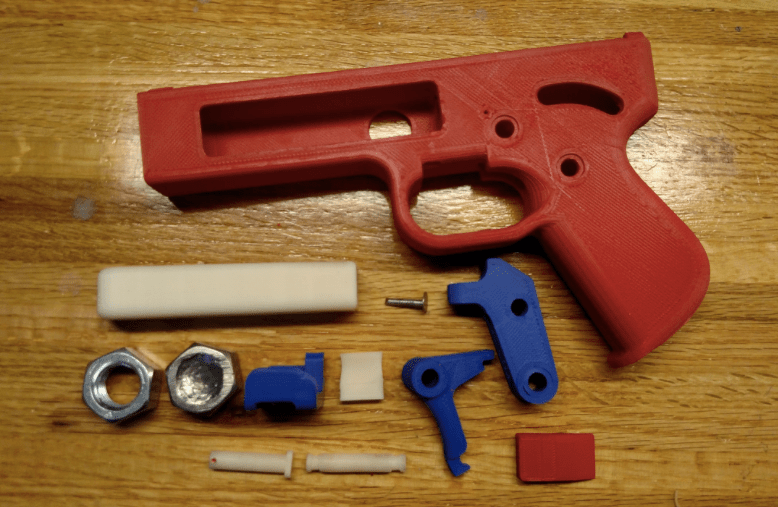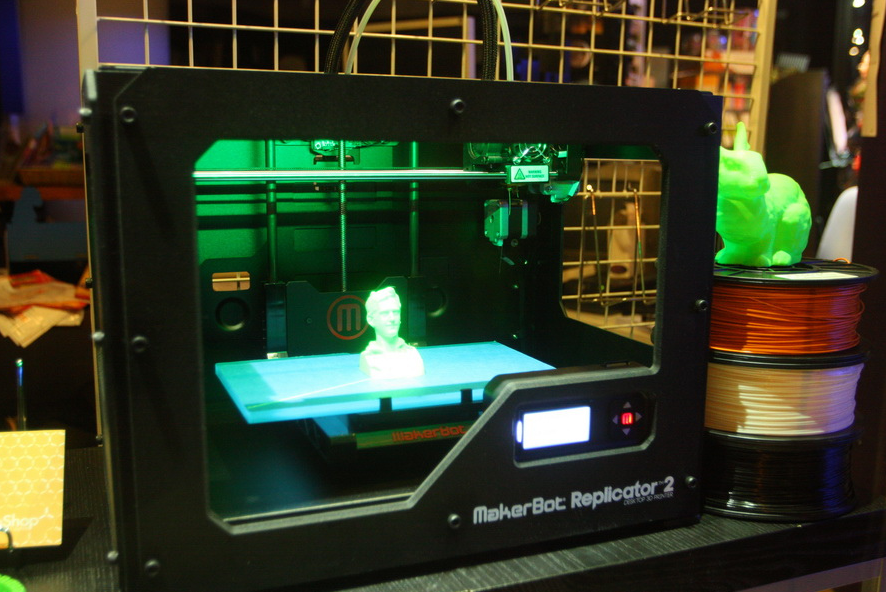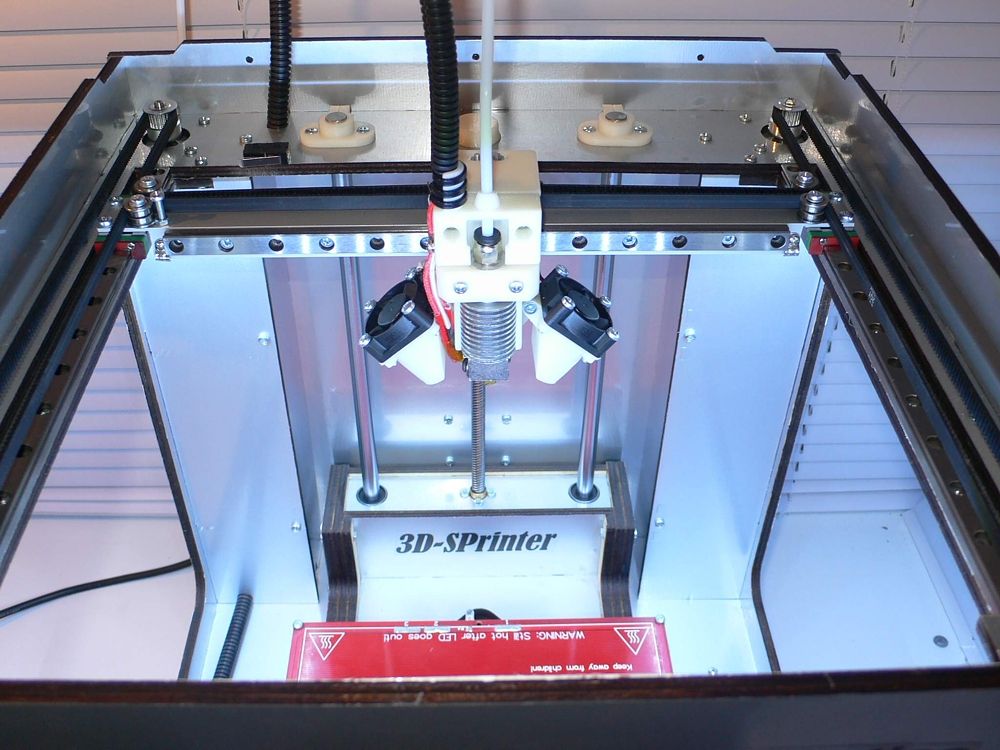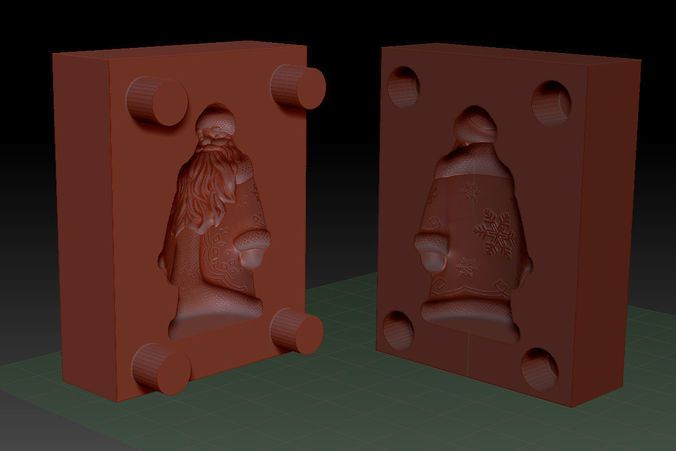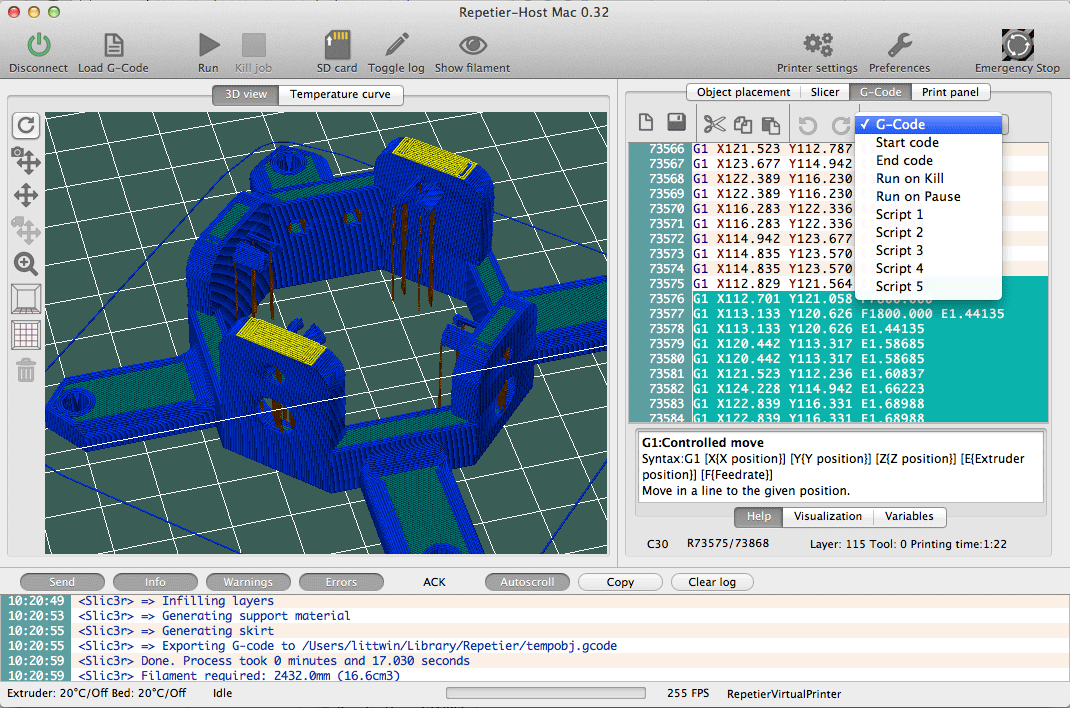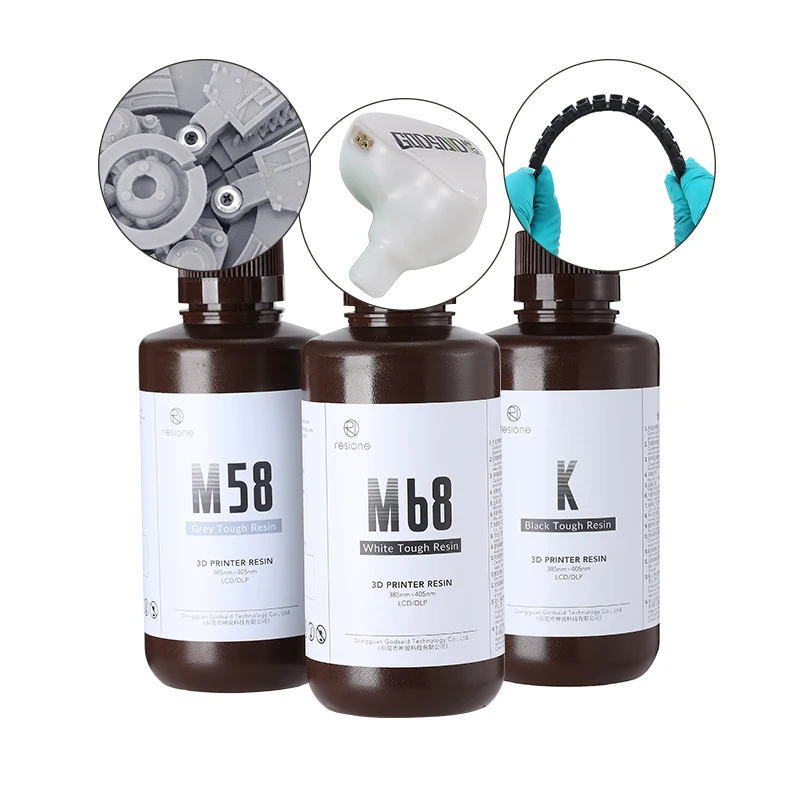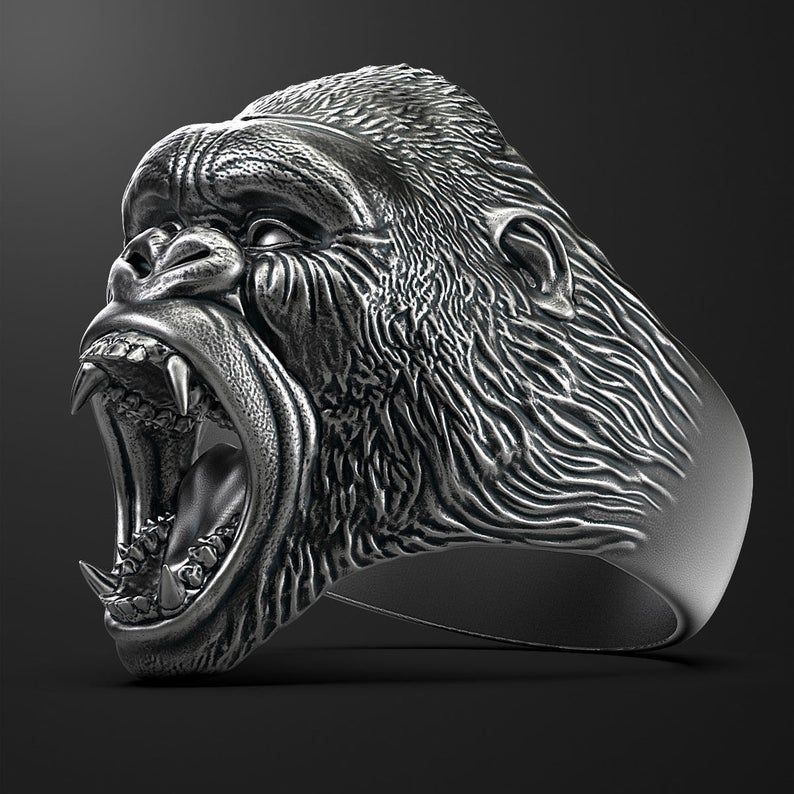Best 3d printer for commercial use
10 Best Commercial & Professional 3D Printers In 2022
- Last Updated: December 8, 2022
- Pat Nathaniel
Are you dreaming of making industrial-quality parts at your SME? Well, stop dreaming and start printing!
Commercial 3D printers let even a tiny garage operation make parts NASA would send to space. A professional 3D printer is a business partner you can’t afford to not have.
But we also know that with an SME budget, you can’t afford to pick the wrong 3D printer, either. You have to choose the right machine for the right application to avoid wasting its potential. But how do you do that?
Read on and meet the best commercial 3D printers in 2022.
Formlabs Form 3+
Build volume: 145 x 145 x 170 mm
Check Latest Price
Raise3D Pro2 Plus
Build volume: 305 × 305 × 605 mm
Check Latest Price
Fusion3 EDGE
Build volume: 355 × 355 × 368 mm
Check Latest Price
Table of Contents
- Best Commercial 3D Printers At A Glance
- 1.
Formlabs Form 3+ (Best Value)
- 2. Raise3D Pro2 Plus (Best Choice)
- 3. Fusion3 EDGE (Premium Choice)
- 4. Ultimaker S5 (Easy to Use)
- 5. Prusa i3 MK3S+ (Best for High-Quality Prints)
- 6. Dremel DigiLab 3D45-EDU (Best for School Use)
- 7. Zortrax M300 Dual (Best for Detailed Prints)
- 8. BCN3D Epsilon W50 (Best for Beginners)
- 9. MakerBot Method X (Best for Easy to Print)
- 10. Delta WASP 2040 Industrial X (Best for Fast Print)
- 1.
- Industrial Quality at Small Business Budgets
- What Is a Commercial 3D Printer?
- What to Look for in a Commercial 3D Printer
- Uses of Commercial 3D Printers
- Conclusion
Best Commercial 3D Printers At A Glance
1. Formlabs Form 3+ (Best Value)
2. Raise3D Pro2 Plus (Best Choice)
3. Fusion3 EDGE (Premium Choice)
4. Ultimaker S5 (Best for Beginners)
5. Prusa i3 MK3S+ (Best for High-Quality Prints)
6. Dremel DigiLab 3D45-EDU (Best for School Use)
Dremel DigiLab 3D45-EDU (Best for School Use)
7. Zortrax M300 Dual (Best for Detailed Prints)
8. BCN3D Epsilon W50 (Best for Beginners)
9. MakerBot Method X (Best for Easy to Print)
10. Delta WASP 2040 Industrial X (Best for Fast Print)
3D Printer Type: LFS | Materials: Resins | Build Volume: 145 x 145 x 170 mm
Ask any commercial SLA 3D printer user, and they’ll tell you Formlabs Form 3+ is the industry workhorse. That reputation is well deserved.
Form 3+ offers excellent print quality at a fantastic value.
With a layer resolution of only 25 microns, Form 3+ can accurately reproduce even the tiniest details. The advanced monitoring sensors ensure steady part quality.
On top of that, Formlabs has designed the printer to be highly automated. Just set it and forget it — your parts will come out great.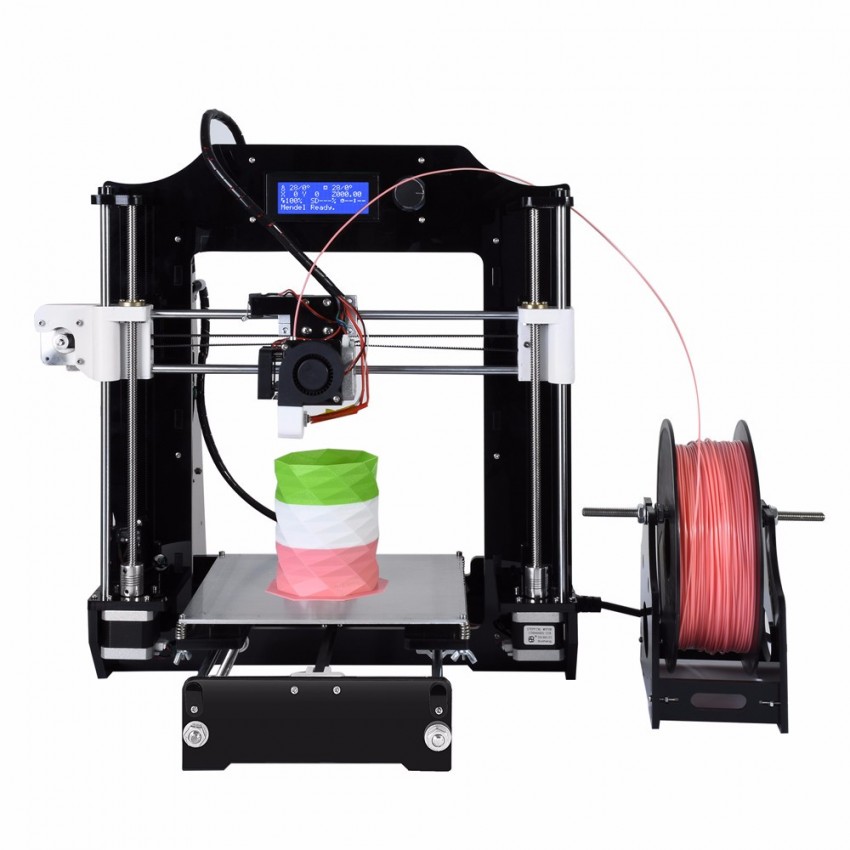
You can also print pretty much whatever you want. Form 3+ supports Formlabs’ extensive material range. It can produce anything from mechanical parts to accurate dental appliances and castable wax models for jewelry.
The printer doesn’t support third-party resins, though, so you’re locked to Formlab’s pricey options. The print chamber is also quite small and the speed (although better than its previous iterations) isn’t the fastest.
But at a price below $4,000, we’ll forgive all that. Formlabs Form 3+ simply provides great versatility and value.
- Affordable
- Excellent part quality
- Wide material range
- No third-party material support
- Small print volume
- Slow-ish
Check Latest Price
2.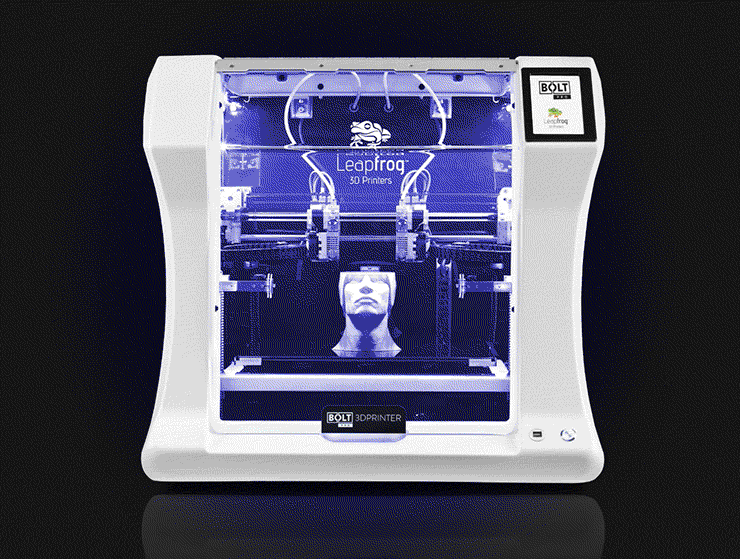 Raise3D Pro2 Plus (Best Choice)
Raise3D Pro2 Plus (Best Choice) 3D Printer Type: FDM | Materials: PLA, ABS, HIPS, PC (Polycarbonate), TPU, Nylon, TPE, PETG, Metal Infused PLA, Woodfilled PLA & Carbon Fiber Reinforced Materials | Build Volume: 305 × 305 × 605 mm
Freddy Mercury probably would’ve liked Raise3D Pro2 Plus. If you want it all and you want it now, this is your machine.
This award winner simply does everything you could need.
As a particular highlight, the dual extruder of the Pro2 Plus can print with two materials at once. You can mix any two options from its staggering material range into one part in the machine’s well-sized build chamber. This is one printer that really makes you create any part you want.
And you have a lot of options. With a maximum extruder temperature of 300°C (572°F), Pro2 Plus works with anything from basic ABS to advanced carbon fiber-reinforced nylons and more.
Oh, and that print quality. This is one of the most accurate FDM printers we’ve seen.
This is one of the most accurate FDM printers we’ve seen.
Pro2 Plus isn’t the most beginner-friendly 3D printer since it doesn’t have automatic bed leveling. But if you know what you’re doing, Raise3D Pro2 Plus is one of the best 3D printers money can buy.
- High accuracy and part quality
- Supports third-party filaments
- Low price
- Dual extruder
- Difficult calibration
- Some technical issues
- No steel nozzle included as default
Check Latest Price
3. Fusion3 EDGE (Premium Choice)
Fusion3 EDGE (Premium Choice) 3D Printer Type: FFF | Materials: PLA, ABS, ASA, Reinforced Materials including Carbon Fiber, Kevlar, and Fiberglass, Flexible, Nylons, PET/PETG & Polycarbonate | Build Volume: 355 × 355 × 368 mm
Fusion3 EDGE is true to its name — this is a cutting-edge 3D printer in many ways. It just launched in early 2022, but it’s already established itself as a great premium printer option.
As a unique quirk, EDGE uses an inexpensive surgical steel print tube instead of the usual screw-in nozzle. Just because it’s inexpensive doesn’t mean this part isn’t premium, though.
It allows materials to flow through effortlessly, giving EDGE a very fast printing speed. And even though it can’t match Raise3D Pro2 Plus, EDGE’s detail accuracy is still great.
The steel tube heats up to 320°C and can withstand abrasive reinforced filaments, like carbon fiber-filled nylon. Add to that support for third-party filaments and you have a lot of materials to choose from.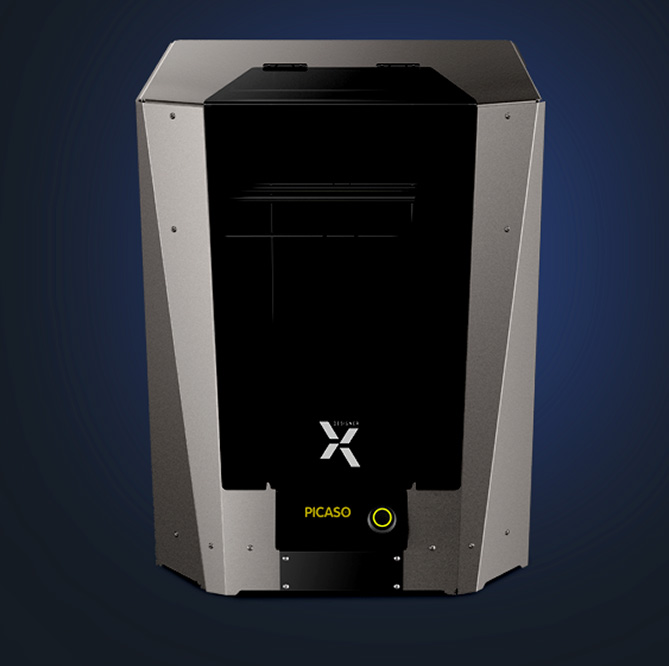
That all sounds great. So, what’s the catch?
Price, mostly. As a premium 3D printer, EDGE does have a high price tag. But with Fusion3 EDGE, you get what you pay for.
- Fast printing
- Reliable part quality
- Quiet and filtered enclosure
- Automatic maintenance reminders
- Pricey
Check Latest Price
4. Ultimaker S5 (Easy to Use)3D Printer Type: FDM | Materials: Tough PLA, TPU 95A, ABS, Nylon, TPU | Build Volume: 330 x 240 x 300 mm
Time is money, and time wasted on tweaking finicky printers is money lost.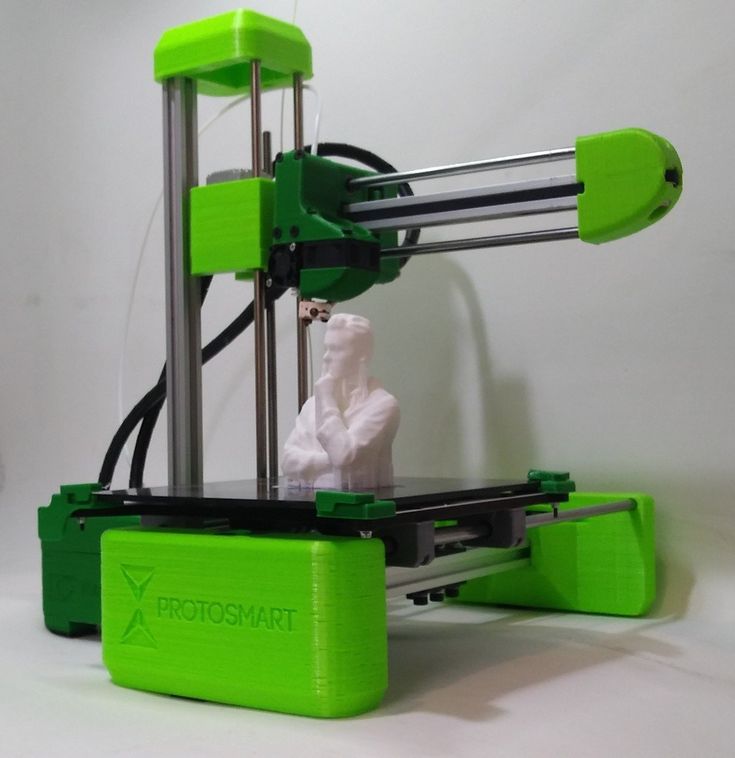 Ultimaker S5’s simple usability saves you both time and money.
Ultimaker S5’s simple usability saves you both time and money.
The S5 integrates seamlessly with Ultimaker’s own Cura software. Together with the clear touchscreen, the printer’s advanced automated features are straightforward to operate. Just a few clicks and the S5 starts printing.
The easy usability translates directly to high productivity. It’s no wonder Volkswagen, Siemens, and others like this printer.
The S5 also offers good printing quality. It has dual extruders for multi-material printing and a heated print bed for reliable part quality.
Another nice feature is the S5’s modularity. It has swappable print cores that enable you to print with more than 200 materials — and even metal filaments.
The simple performance comes at a high price, though. The S5 is also quite slow, compared to the previously featured printers, and its heated print bed is notorious for cracking.
But if you’re looking for a printer that keeps going with little intervention, Ultimaker S5 is your choice.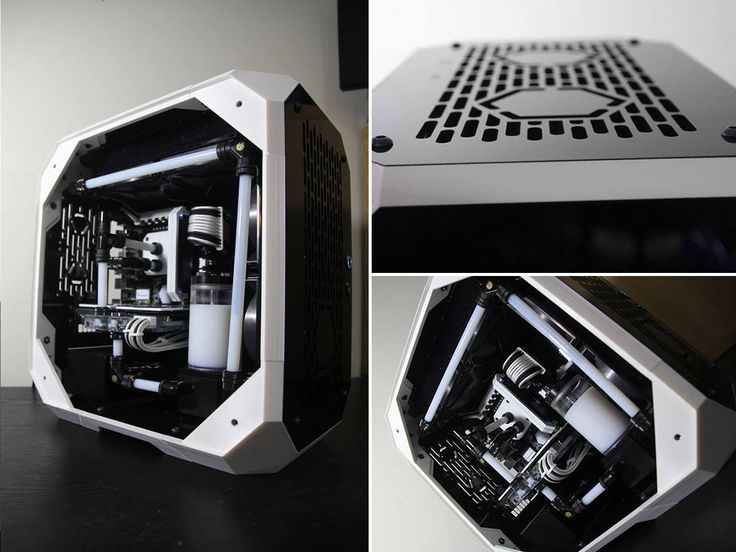
- Simple setup and operation
- Good print quality
- Plenty of material options
- Modular print cores
- Expensive
- Slow printing
- Fragile print bed
Check Latest Price
5. Prusa i3 MK3S+ (Best for High-Quality Prints)3D Printer Type: FDM | Materials: PLA, PETG, ASA, ABS, PC, HIPS, Flex, Nylon, Carbon filled & Woodfill | Build Volume: 250 x 210 x 210 mm
Don’t judge a book by its cover or a 3D printer by its price. At only $1,000, Prusa i3 MK3S+ punches way above its weight. It produces high-quality prints you wouldn’t expect from such an affordable machine.
At only $1,000, Prusa i3 MK3S+ punches way above its weight. It produces high-quality prints you wouldn’t expect from such an affordable machine.
Sure, the minimum layer thickness isn’t as impressive as with Raise3D Pro2 Plus or Fusion3 EDGE. But layer resolution isn’t the end-all-be-all of part quality.
The i3 MK3S+ features predefined printing profiles for Prusa filaments. Just pick the right profile — you’ll get reliably successful prints with almost zero effort. You can quickly alter the default profiles to match third-party filaments as well.
And you can print with almost any filament you want.
The i3 MK3S+ has a high-quality extruder that can reach 300°C. Carbon fiber, nylon or other engineering filaments are within your reach. And they print as effortlessly as anything.
You’ll want to get an enclosure to prevent warping with advanced filaments, though. The Prusa also can’t make huge parts, but what it does make is of consistently high quality.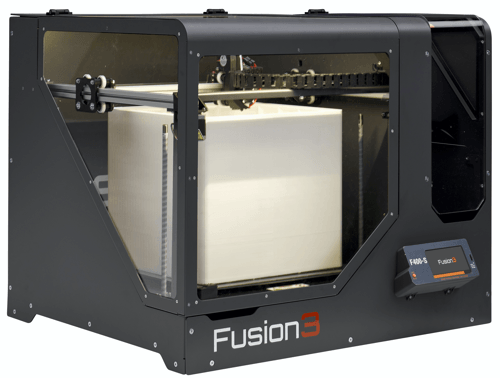
- Reliably great part quality
- Affordable
- Big, helpful online community
- Simple to use
- No enclosure
- Small print volume
- Laggy software
Check For Official Website
Check Latest Price
Check For Kit Price
6.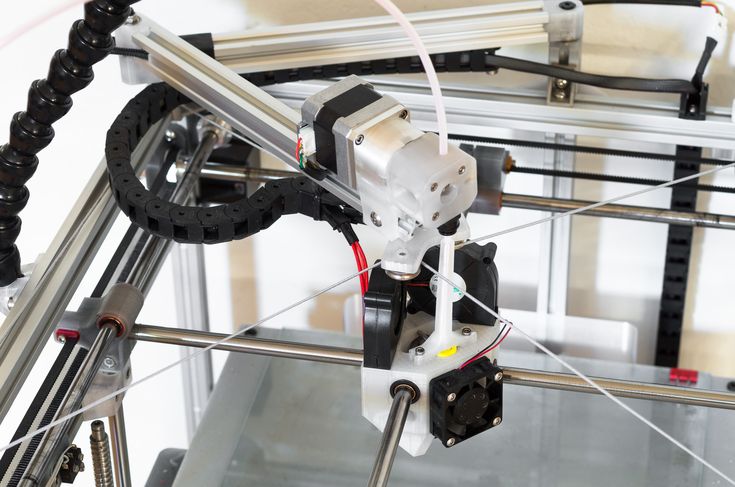 Dremel DigiLab 3D45-EDU (Best for School Use)
Dremel DigiLab 3D45-EDU (Best for School Use) 3D Printer Type: FDM | Materials: PLA, ECO ABS, PETG & Nylon | Build Volume: 254 x 152 x 170 mm
To get good at something, you should start young. Dremel DigiLab 3D45-EDU is a perfect 3D printer for teaching future additive manufacturing experts. Just look at the awards it’s received.
But what makes it so great for schools?
DigiLab 3D45 has a perfect balance of affordability, performance, and ease of use. You can set up and calibrate the printer in 15 minutes. Then you’re ready to start showing students how 3D printing works.
While the Dremel isn’t the most accurate machine, it’s still a professional 3D printer. It produces detailed prints of good quality.
As the students learn, the 3D45 lets them adjust the settings more accurately. The 3D45-EDU package even comes with 30 lesson plans from the 3rd to 12th grades.
The build chamber isn’t huge, but it’s more than enough for school use.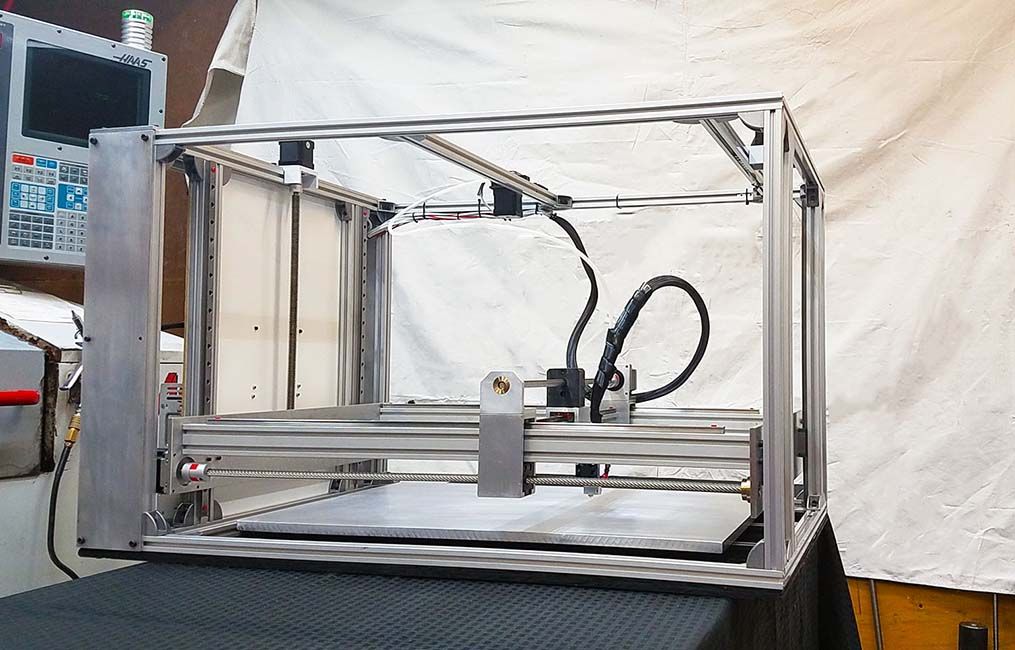 Also, Dremel claims 3D45 can handle nylon, but the 280°C extruder temperature seems a bit low for that.
Also, Dremel claims 3D45 can handle nylon, but the 280°C extruder temperature seems a bit low for that.
Nonetheless, Dremel DigiLab 3D45-EDU is a great package for getting students excited about 3D printing.
Learn more in our guide of the best 3D printers for schools.
(NOTE: Dremel no longer manufactures 3D printers and has licensed its brand to 3PI. The machines are the same, but it’s good to know who to talk to if you need technical support.)
- Included lesson plans
- Easy setup and operation
- Good part quality
- Small print volume
- Slow speed
- Limited materials
Check Latest Price
7. Zortrax M300 Dual (Best for Detailed Prints)
Zortrax M300 Dual (Best for Detailed Prints) 3D Printer Type: LPD Plus | Materials: Most Z-Materials, PLA, Tough PLA, ABS, ASA, PETG, CPE, Nylon, TPU, TPE & PVA | Build Volume: 265 x 265 x 300 mm
Zortrax M300 Dual will surprise you. It creates highly detailed prints — despite the on-paper rough and inaccurate 150-micron layer height.
How on earth does this 3D printer do it?
The M300 Dual’s secret lies in the Layer Plastic Deposition (LDP) technology. It’s essentially Zortrax’s own spin of fused filament fabrication (FFF/FDM). Tailor-made for this system, LDP makes use of M300’s accurate leveling and calibration sensors to deliver very high-quality prints.
Another part of the puzzle is Zortrax’s proprietary filaments. The 3D printer has a complete Zortrax ecosystem, so it knows precisely how to handle the materials to deliver fine details beyond its specs.
The dual extruder also prints with two nozzles, one distributing Zortrax’s water-soluble support material. This is a really handy invention since you can just wash the supports away after printing.
This is a really handy invention since you can just wash the supports away after printing.
Of course, that means you need to buy Zortrax’s filaments. You can use third-party materials, but you may not get as fine detail.
Zortrax M300 Dual will bring more detail than you’d expect to all small businesses.
- Excellent detail and part quality
- Water-soluble supports
- Practically locked to Zortrax filaments
- Mediocre volume
Check Latest Price
8. BCN3D Epsilon W50 (Best for Beginners)3D Printer Type: FFF | Materials: PLA, PVA, PETG, TPU, ABS, PP & PA | Build Volume: 420 x 300 x 400 mm
An entry-level 3D printer often sacrifices production power for simple usability.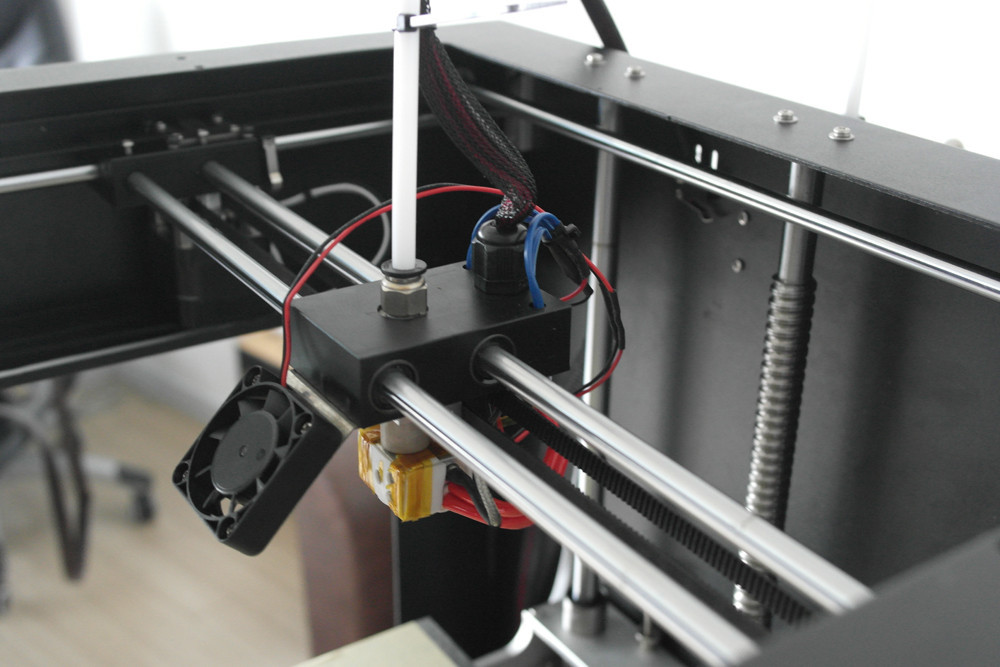 It’s a good thing, then, that BCN3D Epsilon W50 isn’t an entry-level 3D printer. It’s a professional machine that’s easy enough for beginners to use.
It’s a good thing, then, that BCN3D Epsilon W50 isn’t an entry-level 3D printer. It’s a professional machine that’s easy enough for beginners to use.
The printer’s quick to set up and calibrate. The most laborious part is print bed calibration — it’s not hard, just time-consuming. Even if it’s your first 3D printer, you’ll get Epsilon W50 ready to go in about 20 minutes.
And it still brings serious power to your workshop.
Epsilon W50 uses an independent dual extruder system. It can print two materials at once, print mirrored component halves, or two identical parts at once. Combined with the big print volume, you’ll enjoy industrial-level productivity.
One thing deterring beginners might be Epsilon W50’s admittedly high price point. But think of this high-end 3D printer like a good pair of boots — it costs more upfront but it will keep printing reliably for years.
In a nutshell, BCN3D Epsilon W50 is a beginner-friendly machine with veteran-level performance.
- Easy and reliable printing
- Independent dual extruder system
- Large print volume
- Expensive
- Default hot end doesn’t support reinforced filaments
- Long bed calibration process
Check Latest Price
9. MakerBot Method X (Best for Easy to Print)3D Printer Type: FDM | Materials: PLA, Tough PLA, PETG, PETG-ESD, Nylon, PC-ABS, ABS, ASA & PVA | Build Volume: 190 x 190 x 196 mm
It just keeps going and going and going… And that’s good.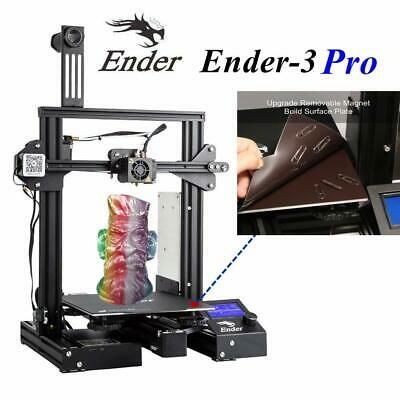 MakerBot Method X is the commercial 3D printer you need for effortless, reliable production.
MakerBot Method X is the commercial 3D printer you need for effortless, reliable production.
Method X has been designed from the beginning to make printing as easy as possible. It has plenty of features, like thermal regulation and a temperature control filament drawer, that contribute to consistent and predictable part quality.
But MakerBot recently pulled another ace from its sleeve.
The company recently released a new water-dissolvable support material. It rinses pretty cleanly off even under tap water, removing the need for extensive post-processing.
Imagine that — no cutting off supports with FDM.
That said, Method X isn’t a flashy printer. It has a small build chamber and you need to buy separate extruders to make full use of the admittedly wide material range.
But that’s Method X for you. It doesn’t boast, it doesn’t grumble — it just prints.
- Extremely reliable
- Simple to use
- Wide material range
- Needs add-ons for reinforced materials
- Default slicer could be better
Check Latest Price
10. Delta WASP 2040 Industrial X (Best for Fast Print)
Delta WASP 2040 Industrial X (Best for Fast Print) 3D Printer Type: FDM | Materials: PLA, ABS, PETG, TPU, TPE, Polypropylene, Polycarbonate, PC+ABS, PPS, PMMA, PVA & PA | Build Volume: Ø 200 x h 400 mm
Do you feel the need? The need for speed? Delta WASP 2040 Industrial X is the speed demon you’re looking for.
The WASP achieves lightning-fast printing thanks to three robotic arms that move its extruder around. Automatic calibration makes operating this futuristic solution simple.
But wait, there’s more than speed to the WASP!
Its dual gear filament driver pushes material through at a steady rate, resulting in good detail quality. The accuracy doesn’t beat printers like Raise3D Pro2 Plus, but the speed sure does.
You might expect constant maintenance at these speeds, but don’t worry. Delta’s Hot and Cold system controls the machine’s internal and external temperature. You won’t have to constantly blow money on spare parts.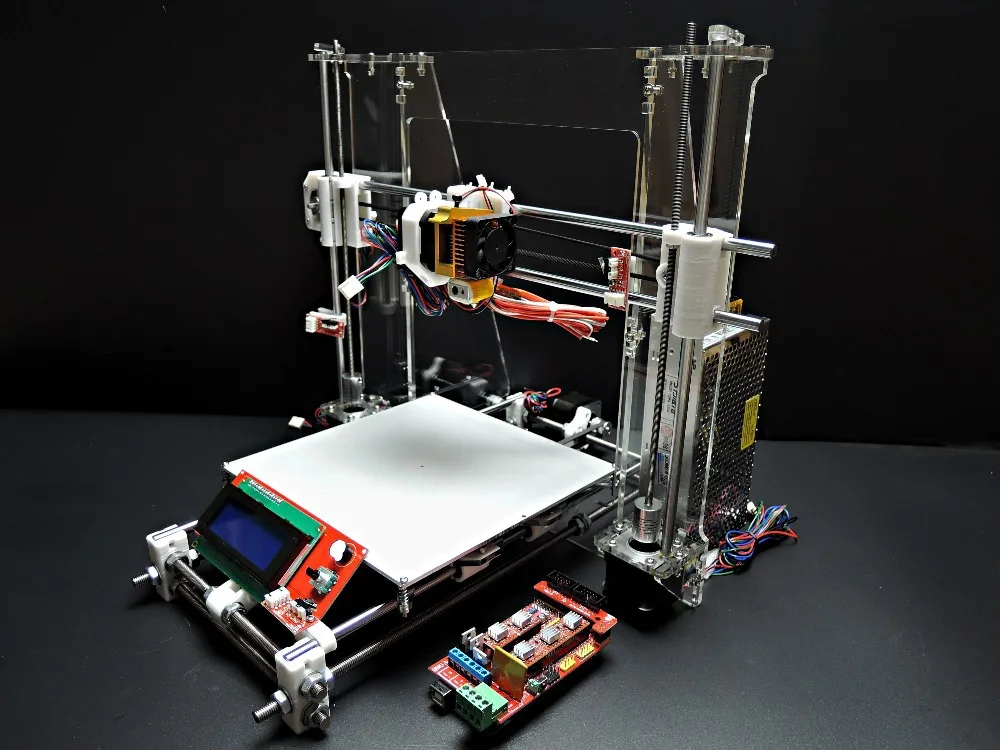
As a cherry on top of it all, the WASP supports third-party materials. The material range isn’t as extensive as with some other printers, but it should keep you in business for a long time.
That’s a good description for Delta WASP 2040 Industrial X, actually. Printing with it is like watching Usain Bolt run a marathon.
- Lightning-fast printing
- Affordable
- Low maintenance
- Mediocre detail
- Bulky machine
Check Latest Price
Industrial Quality at Small Business Budgets
Source: Youtube Marvin Medina (3D Printed Cellphone Case)Commercial 3D printers are great equalizers. They’re quickly changing the SME landscape by narrowing the gap between small and large businesses.
They’re quickly changing the SME landscape by narrowing the gap between small and large businesses.
The best professional 3D printers make printing plastics easy, fast, and affordable. You can produce components with detail quality comparable to injection molding and strength that can surpass metal.
But not just every 3D printer deserves the title of a “commercial 3D printer.” What is it that makes a 3D printer professional?
What Is a Commercial 3D Printer?
Source: Youtube Tech HD (3D Printed VW Bus Toy)Commercial 3D printers — also called prosumer or professional 3D printers — sit in the space between consumer 3D printers and full-blown industrial 3D printing behemoths.
In general, a commercial 3D printer costs less than $10,000. They have features that only the most advanced hobbyists might need but which are valuable for professional applications.
At the same time, they’re not meant for large-scale mass production like industrial printers. In short, they’re a low-cost method for SMEs to make use of industrial-grade materials.
In short, they’re a low-cost method for SMEs to make use of industrial-grade materials.
What to Look for in a Commercial 3D Printer
Source: Youtube Tech HD (Car Parts)Are you about to buy the first printer for your business? You might feel a bit lost among all the options for professional 3D printers — and we sympathize.
When browsing through our list of machines, keep an eye on these details to find the right machine for you.
3D Printing Technology
Different types of 3D printers excel at different tasks. If you need strong parts that don’t necessarily look amazing, FDM technology can create components tougher than metal. But if intricate detail is your key to success, SLA resin printers will blow you away with their detail quality.
Printing Performance
Pay attention to the maximum nozzle temperature (with FDM printers) and print speed. The higher the maximum temperature, the more materials you can print with. And, of course, the faster you can print, the higher your productivity.
Material Range
Good professional 3D printers will support a wide variety of materials, from flexible ones to reinforced engineering plastics. But wider material compatibility can add to the price. If you know you only need one or two materials, don’t sink money into a machine that can do it all
Build Volume
Commercial applications often require you to create large prints. Make sure your printer can build big enough parts — otherwise, it’s just a waste of money.
Printer Features
High-end 3D printers often come with advanced features, like a heated print bed and chamber, a built-in camera, and more. These aren’t just expensive toys. You want them to ensure consistently high part quality.
Uses of Commercial 3D Printers
Source: Youtube 3d Printed ProfitsProfessional 3D printers are versatile machines that can benefit many different types of SMEs. If you create a product, you can probably reduce costs, shorten lead times, and streamline workflows with a 3D printer. Here are just some of their leading commercial uses.
Here are just some of their leading commercial uses.
Part Design & Prototyping
3D printing enables a higher degree of design freedom when compared to traditional manufacturing. Combined with materials that can create true-to-life surface textures and detail, you have a powerful prototyping technology in your hands.
The best professional 3D printers produce accurate prototypes in a matter of hours — featuring shapes that are impossible for conventional production methods. You can save time and money by creating your prototypes in-house.
Small-Scale Manufacturing
Commercial 3D printers support end-use ready materials, such as nylon or PEEK, and produce durable parts with smooth surfaces. You can print ready-to-sell components for cars, drones, or functional tools.
Alternatively, you can print spare parts for machinery you use for different jobs. Save money and keep your machines running, how about that?
Medical Applications
SLA resin printers — like Formlabs Form 3+ we listed — can create accurate medical appliances from durable, biocompatible materials. These printers are quickly becoming standard fixtures in every dentist’s office, for example. Read our review of the best dental 3D printers here.
These printers are quickly becoming standard fixtures in every dentist’s office, for example. Read our review of the best dental 3D printers here.
But even filament printers have their medical uses. They let doctors produce all kinds of useful tools, like hooks, trays, or medical models.
Architecture
Every major building began its life as a blueprint and a model. In the past decade or so, a professional 3D printer has become an architect’s best friend.
Building models by hand can take weeks and cost a fortune. Now, imagine designing a building in 3D modeling software and printing it overnight for a meeting in the morning.
Conclusion
Commercial 3D printers have done to SMEs what industrial printers did to large-scale businesses. They’ve made manufacturing faster, cheaper, and more accessible. A professional 3D printer will be a welcome addition to your business.
If you’re still wondering what the best commercial 3D printers for you are, here are our suggestions:
- For the highest detail quality, consider Formlabs Form 3+ or Zortrax M300 Dual.
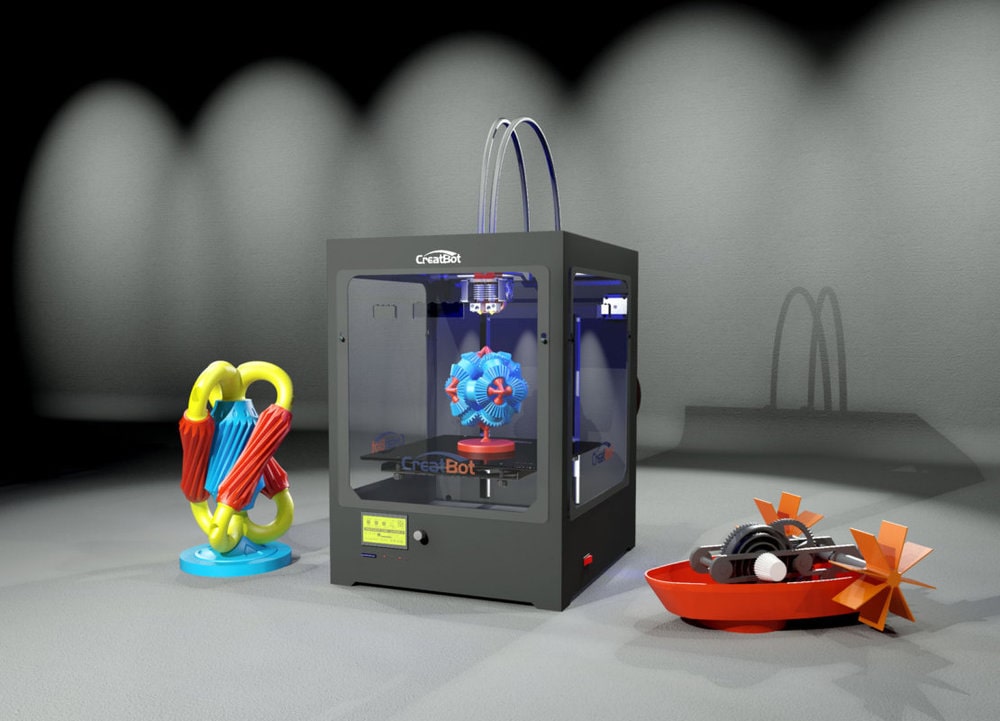
- For durable end-use parts, go for Ultimaker S5 or Makerbot Method X.
- Dremel DigiLab 3D45-EDU introduces professional 3D printers to classrooms.
- Finally, the one printer to rule them all is Raise3D Pro2 Plus.
Commercial & Professional 3D Printer Buyer's Guide 2022 (Under $10,000)
Commercial 3D printers are changing how small businesses manufacture, how designers create and iterate, and how schools, healthcare professionals and engineers work.
These professional 3D printers, more expensive than standard desktop 3D printers but less than $10,000+ industrial 3D printers, allow small businesses to be more effective than ever in prototyping and improving their products.
This article focuses on highlighting the best commercial 3D printers, also known as prosumer 3D printers, production 3D printers, commercial grade 3D printers, or high end 3D printers, that are capable of producing professional-grade parts at decent scale, but cost less than $10,000.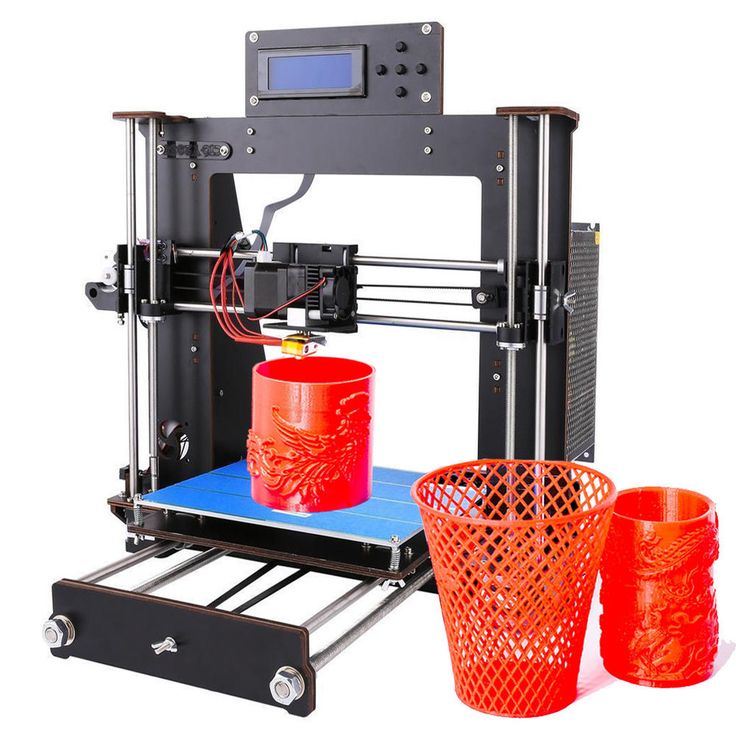 We therefore categorize commercial 3D printer price as up to $10,000, with no low end price provided it meets professional and small business 3D printer requirements.
We therefore categorize commercial 3D printer price as up to $10,000, with no low end price provided it meets professional and small business 3D printer requirements.
What to expect in a commercial 3D printer?
Commercial grade 3D printers can take many forms: some need an FDM 3D printer that can 3D print PEEK or Ultem filaments, create extremely precise prototypes, or create multi-colored architectural models.
On the other hand, you may need a professional resin 3D printer to create ultra smooth resin prototypes for dental, aesthetic prototypes for items like sunglasses, and much more.
You may also be looking for a professional SLS 3D printer — though they often cost more than $10,000 — for high quality PA12 prototypes, functional parts, and various useful parts for engineers and designers.
Generally however, you should expect the following from a professional 3D printer:
- Commercial grade 3D printing performance: such as powerful heated chambers in FDM 3D printers for tougher material printing and systems for consistent and accurate printing.
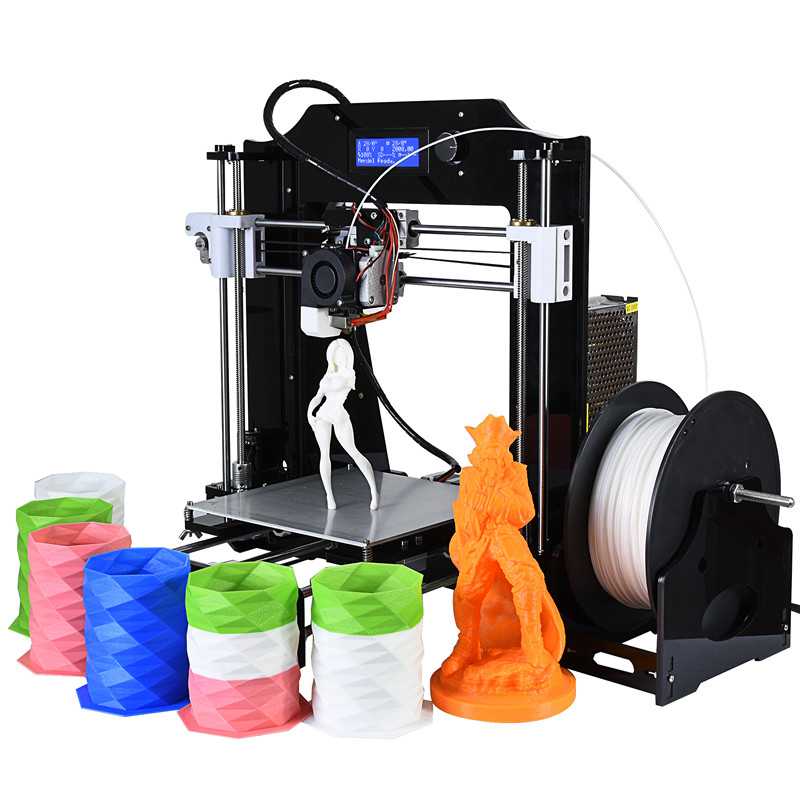
- Wide material compatibility: with heated beds and extruders that can reach high temperatures for printing tougher filaments like Nylon, PC, PP, and perhaps even Ultem or PEEK.
- Fast printing and workflow: the best 3D printers for small businesses not only print quickly (at least twice the speed of desktop printers), but the entire workflow — from CAD software, to slicing, to printing, and then to iterating again — needs to be efficient for overall rapid prototyping.
- Very accurate: where resin 3D printers and SLS printers have advantages are in accuracy and surface finish. Resin printers can reach precisions that FDM printers cannot, so for precise and intricate models, such as characters for films or games, or wax molds for casting into precious metal jewelry, they’re ideal commercial 3D printers. SLS 3D printers require less post processing as they do not print with supports, making them ideal production 3D printers for ready-to-go prototypes made from Nylon.

- Large printing area: commercial 3D printers should have large enough build areas to support either large prototypes, or the printing of multiple small parts simultaneously, as a scalable production 3D printing system. 3D printers for commercial uses we recommend are typically larger for effective batch production 3D printing.
Our commercial 3D printer comparison sorts low to high price, making recommendations on the best 3D printer for business, for production, and many other 3D printers for different commercial uses.
Prusa i3 MK3S+ — low cost commercial 3D printer for small businesses on a budget
- Price: $999 fully assembled — Available on Prusa Store here / $749 as a kit — Available on Prusa Store here
- Build volume: 250 x 210 x 210 mm
With a price of under $1,000 you’d expect the Prusa i3 MK3S to be limited to standard consumer uses like printing fun models from Thingiverse, or fun basic 3D printing projects. However, it excels far beyond this, functioning as one of the best 3D printers for small businesses if you’re on a tight budget.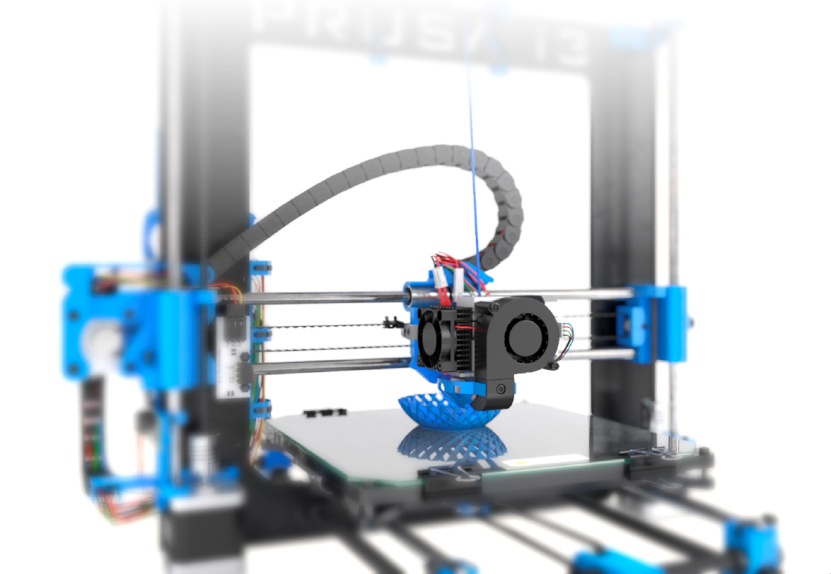
It can’t compete with higher end 3D printers in some areas, like size of build area, but it’s a fantastic commercial 3D printer for standard size prototypes in materials like PETG, ASA, Nylon, PC, PP, HIPS, and carbon fiber filaments.
Prusa 3D printers are known for their reliability and with an above 200mm/s travel speed, it’s fairly quick for the price. These factors, combined with precise 50-micron minimum layer heights, make it a great overall commercial 3D printer for professional and precise prototype production.
For those looking for a larger 3D printer, a 3D printer for materials like PEEK, or more precise resin 3D printers, keep reading.
Ultimaker S3 — accurate commercial 3D printer for high quality prototypes
- Price: $4,080 — Available on Dynamism here / Available on Matterhackers here
- Build volume: 230 x 190 x 200 mm
The Ultimaker S3 follows the incredibly popular Ultimaker 3, and is an effective production 3D printer for small businesses and engineers capable of fantastic 20-micron resolutions. It can extrude composite filaments from either of its extruders, and can easily print soluble filaments with the dual extruder for easier post processing.
It can extrude composite filaments from either of its extruders, and can easily print soluble filaments with the dual extruder for easier post processing.
Ultimaker created and develop Cura, the world’s most loved 3D slicer, but also offer more professional 3D printer software as part of their Enterprise packages for commercial 3D printing needs. These premium 3D printer options include the ability to open CAD files in Cura, unlimited storage of your parts in their digital parts library, as well as integrating 3D modeling software like SolidWorks and Autodesk Inventor into your workflow with their plugins. All these make for an efficient commercial 3D printing workflow for quick and effective iterating and part production.
The touchscreen is easy to navigate, and WiFi connectivity makes it quick to access and print your files remotely in their digital library.
As a professional 3D printer, Ultimaker serve not just 3D printers for small businesses, but also huge clients like Volkswagen. The German multinational used Ultimaker 3D printers to produce over 1,000 parts, remarking on the productivity and ergonomics of Ultimaker’s printers.
The German multinational used Ultimaker 3D printers to produce over 1,000 parts, remarking on the productivity and ergonomics of Ultimaker’s printers.
The only factor affecting the Ultimaker S3’s usefulness as a full professional grade 3D printer is the build volume size, which could be larger. However, Ultimaker also offer the S5 for larger print needs, so read on for more information on this.
Ultimaker S5 — all-round excellent production 3D printer
- Price: $6,355 — Available on Dynamism here / Available on Matterhackers here
- Build volume: 330 x 240 x 300 mm
The Ultimaker S5 is the big brother of the already very powerful S3, and a commercial grade 3D printer for high quality engineering parts and accurate prototypes.
The main difference between the S3 and S5 is the larger print volume, a major improvement for those looking for a 3D printer for their small business capable of large prototype printing. It still features the same workflow options, dual extrusion, 20-micron layer heights, and trademark reliability and and precision.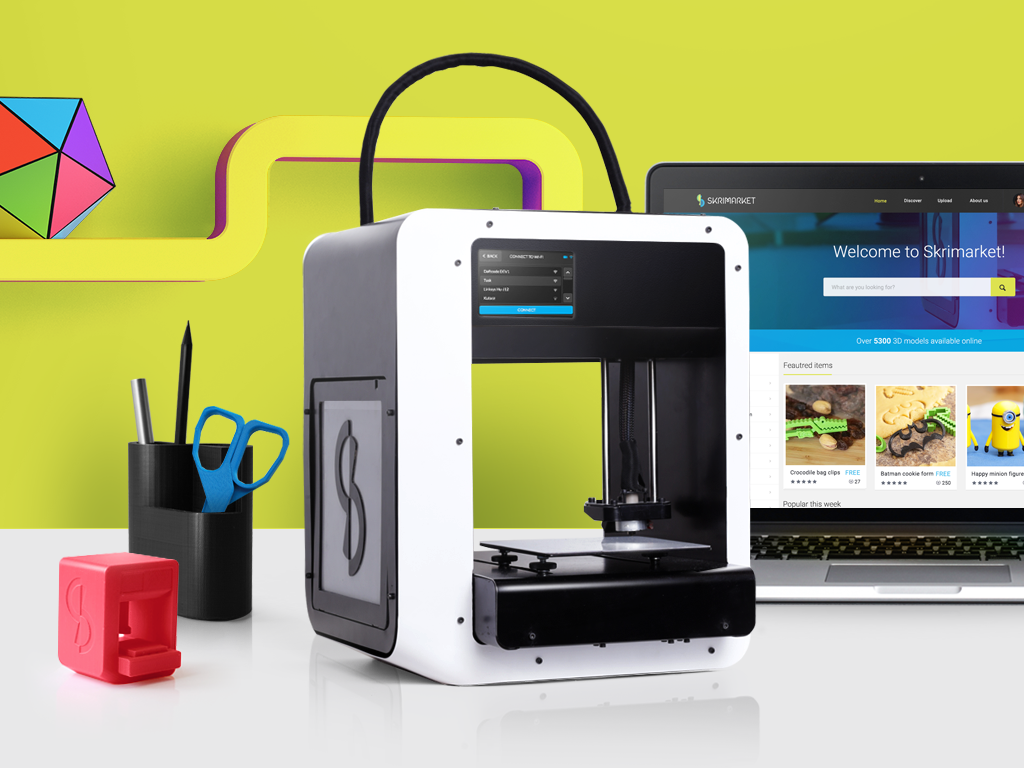
However, you can also turn the S5 into a scalable production 3D printer with the Ultimaker’s S5 Pro Bundle for another few thousand dollars. This bundle adds both a spool holder and top filter. The material handler can hold up to six filament spools, and can automatically change them in and out for different uses as well as protecting filaments from moisture that would deteriorate print quality and protect them from dust, with the environment control filtering out fumes.
- The Ultimaker S5 Pro Bundle costs around $9,550 — Available on Dynamism here / Available on Matterhackers here
The Pro Bundle turns the S5 into the complete commericial 3D printer, able to print continuously, accurately, large parts — everything except super high grade material printing like PEEK and Ultem.
The Ultimaker S5, alongside the S5 Pro Bundle with material holder and environment control add-ons.Formlabs Form 3 — precise professional 3D printer for accurate resin parts
- Price: $3,499 — Available on Dynamism here
- Build volume: 145 x 145 x 185 mm
The Form 3 is sold as a professional quality 3D printer at desktop prices, building on the Form 2’s stellar reputation with incredible resolutions and able to create parts you can barely see the individual layer lines on.
Featuring their LFS (low force stereolithography) tech, layer spot clarity, as well as consistency, surface quality and better translucent material printing are some of the improvements made to the Form 3.
For production engineers looking for a workhorse production 3D printer that can go non-stop, the Form 3 is more than capable, with data on ongoing print performance constantly relayed and alerts if print performance changes so you can make alterations.
You can print in standard resins, or castable wax for jewelry casting, as well as specialized biocompatible commercial grade 3D printing resins for dental uses — which you should instead get the Form 3B for.
Their PreForm software makes preparing your prints easy, and if you’re looking to scale up to a 3D printing factory with multiple printers Formlabs have specialized consulting teams to help, and offer software for managing multiple 3D printers simultaneously.
Raise3D Pro2 Plus — large production 3D printer for small businesses
- Price: $5,999 — Available on Dynamism here / Available on Matterhackers here
- Build volume: 305 x 305 x 605 mm
A true workhorse production 3D printer, the Raise3D Pro2 Plus can work 24/7 without much issue.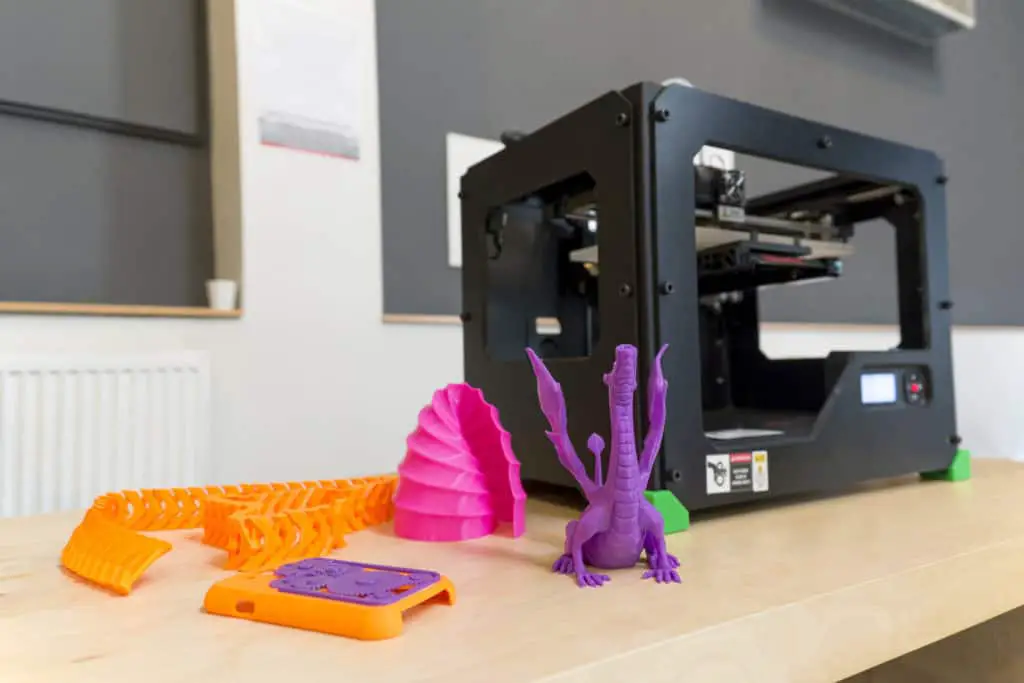 Able to reach 300°C extruder temperatures, printing with filaments ranging from HIPS, ASA, PP, PVA, flexible filaments like TPU and TPE, Nylon, glass, carbon fiber, metal and wood filled filaments is no problem.
Able to reach 300°C extruder temperatures, printing with filaments ranging from HIPS, ASA, PP, PVA, flexible filaments like TPU and TPE, Nylon, glass, carbon fiber, metal and wood filled filaments is no problem.
As well as the huge build volume and wide material compatibility, the Raise3D Pro2 Plus also offers great precision, with up to 0.01 mm layer heights and 5-micron repeatability. You can change the nozzle out to a smaller or larger one depending on whether your project favors speed or precision.
The large 7-inch touchscreen simplifies your workflow and makes it easy to switch settings or choose your model to print — made easier by Raise3D’s visual model selection previewer. And, if during printing you run into any problems with the power or any other error, the printer can resume from whenever it was stopped without issue.
Marking itself as one of the best 3D printer for business uses, it has some of the largest print areas, as well as an aerospace grade build plate offering excellent adhesion, durability, and preventing warping that can affect or ruin prints — as well as making prints easy to remove. It’s all fully enclosed, so you can effectively maintain and control the chamber temperature to minimize warping and prevent fumes from spreading.
It’s all fully enclosed, so you can effectively maintain and control the chamber temperature to minimize warping and prevent fumes from spreading.
If you want the workhorse benefits of the Raise3D Pro2 Plus, but don’t need the extra Z-axis height building, you can save a couple thousand dollars by going with their standard Pro2 model instead, with a 300mm maximum print height instead of the Pro2 Plus’ 605mm.
Intamsys Funmat HT Enhanced — professional 3D printer for PEEK & Ultem printing
- Price: $7,500 — Available on Matterhackers here
- Build volume: 260 x 260 x 260 mm
For those looking for a specialized PEEK and Ultem 3D printer, the Intamsys Funmat HT Enhanced is the best professional 3D printer for PEEK that’s in most small business’s budget. Costing $6,000 rather than the $20,000+ commonly seen among commercial 3D printers for PEEK, the Intamsys Funmat HT is a great entry-level production 3D printer.
With 90°C constant chamber temperatures, a 160°C heated build plate, and 450°C maximum extruder temperatures from its all-metal hot end, printing PEEK, PEKK, PPSU and Ultem are no problem. However, if you want to use it for printing PEEK as well as more standard plastics you can also do that, with interchangeable nozzles for different printing plastics like PLA and ABS, PC, Nylon, ASA, and more.
However, if you want to use it for printing PEEK as well as more standard plastics you can also do that, with interchangeable nozzles for different printing plastics like PLA and ABS, PC, Nylon, ASA, and more.
Therefore, the Intamsys Funmat HT is a great entry-level production 3D printer for high performance polymer printing. It can automatically level itself with its four advanced drivers offering great precision, and the industrial build platform quality and design features PEI film and glass ceramic materials for great durability and minimal deformation during printing — as well as being safe to use with biocompatible materials like PEEK that may be used to print medical or dental parts.
With PEEK’s extensive use in medical parts, electrical engineering, aerospace, dental, Ultem’s industrial uses, and PPSU’s medical applications, the Intamsys Funmat HT capitalizes on 3D printing’s fastest growing material segment, but at a low price. Intamsys sell their own Ultem and PEEK filaments, and overall, the Funmat HT Enhanced is one of the best 3D printers for small businesses looking to print high performance plastics to either create parts for other companies, or iterate in-house.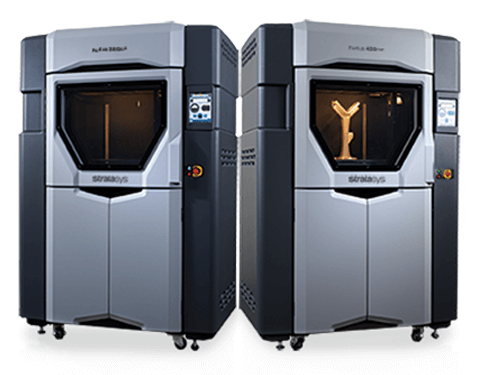 The Intamsys Funmat HT Enhanced is an ideal professional 3D printer for PEEK without breaking the bank.
The Intamsys Funmat HT Enhanced is an ideal professional 3D printer for PEEK without breaking the bank.
Some other articles you may be interested in:
- The best 3D printers for small business
- Best PEEK 3D printers
- Best industrial 3D printers
- Best 3D printers under $2,000
- Best 3D printers under $5,000
- Best metal 3D printers
Which 3D printer to choose for home and hobby use
A few years ago, 3D printers were bulky industrial machines, but now 3D printing is becoming more accessible for home use. When buying their first printer, many are disappointed. This may be due to the unsatisfactory quality of the resulting models or the complex setup and maintenance of the 3D printer.
In the reviews that are found on the Internet, printers are often shown after a lot of upgrades or a long selection of settings for printing. This is not at all the result that a beginner who first got acquainted with 3D printing will get. nine0003
nine0003
In order not to be disappointed, before buying, you need to understand which model is suitable for your tasks. First of all, it is worth deciding what the printer will be used for. What is the main property that finished products should have? What is more important, the physical properties of the model or the ideal surface and detail? Not only the model depends on this, but also the technology by which the 3D printer will work.
Which technology to choose? FDM or LCD?
If you need to make a small detailed figurine with a perfectly smooth surface, you should pay attention to models that work on LCD technology (LCD works on a principle similar to DLP - Digital Light Processing or “digital light processing”). nine0003
LCD prints using a photopolymer resin that cures under UV light. This makes it possible to produce without deformation, even small and thin products that cannot be manufactured using FDM technology.
Resin model
Now on sale there are many photopolymer resins with different properties.A few years ago the choice was not great. Basically, finished products were not strong enough for use in functional models. Now engineering resins have begun to appear on sale. Products from them are not inferior in strength to models made using FDM technology from ABS or even nylon. nine0022
If it is necessary to produce large products with different properties, or the tasks will be very diverse, then the choice is with FDM technology. But it is important to understand that finished products will not have a perfectly smooth surface. Of course, you can polish the model, but this is additional time and labor costs.
FDM technology builds a model using molten plastic filament, which is fed from the print head. The print head (extruder) “grows” the model layer by layer on the printing table. nine0003
FDM Models
FDM technology became widespread much earlier than DLP. Thanks to this, a wide variety of 3D printers and consumables for them has appeared.
You can find many decorative plastics that imitate various materials, or engineering plastics for making functional models or mock-ups.
Choosing an LCD printer
Photopolymer printers work on one of 3 technologies - DLP, LCD or SLA. nine0003
As home printers, devices based on LCD technology are usually used due to their availability and low price.
Printer design
SLA technology appeared the very first among photopolymer printers. With the help of a point-focused beam, the desired areas of the resin are gradually illuminated. This is repeated layer by layer.
How SLA 9 works0018
Since the surface of the model is perfectly smooth, SLA has become used in the jewelry and dental industries.
Pros:
Cons:
DLP technology appeared later than SLA, but it is very similar to it. The main difference is that the light source is not a focused beam, but a projector.
This made it possible to illuminate the entire layer at once, which significantly accelerated the production of models. The quality of the surface was slightly inferior to SLA, but modern DLP printers, in terms of the quality of models, are almost as good as SLA technology. nine0003
How DLP works
Pros:
Faster production of models due to the illumination of the entire layer
Consumables are slightly cheaper than SLA
High surface quality (although may be inferior to SLA)
Cons:
LCD technology is the youngest of all. The DLP principle is taken as a basis, but an LCD display is used as a matrix or illumination pattern. LEDs are used as a source of UV light in LCD technology. Thanks to inexpensive components, we managed to get a simple, but high-quality and affordable photopolymer printer.
How the LCD printer works
Pros:
small cost
Cheap parts
Cons:
Low accuracy compared to SLA and DLP (for jewelers and dentists, the quality of LSD prints may not be enough, although more and more accurate models appear with the development of technology) nine0003
Possible stray light
The quality of models may decrease at the edges of the printable area (this can be corrected programmatically)
Resins that are used as a consumable for photopolymer printing can smell strongly and unpleasantly during operation.
Try to use the printer in a well-ventilated area, or choose a printer with a sealed cabinet and filter. nine0003
When choosing an LCD printer, pay special attention to the rigidity and positioning accuracy of the platform along the Z axis. If there are poor quality guides along the Z axis or even a slight play, then the surface quality of the finished model may turn out to be sloppy or the model will turn out to be unevenly striped.
Rating of the best LCD 3D printers for home
Anycubic Photon Mono
This is an LCD printer with a matrix that allows you to increase the speed and accuracy of printing. Anycubic Photon Mono will be a good helper for hobbyists and modellers. nine0003
Anycubic Photon Mono SE
Anycubic Photon Mono SE has an unusual parallel light source. This minimizes distortion at the edges of the printable area. You can effectively use the entire working area of the machine and produce many small models at a time.

Phrozen Sonic Mini 4K
Model with high resolution LCD display and large print area. The monochrome display transmits UV rays better and allows you to print much faster than similar devices with a conventional display. The manufacturer claims a screen life of more than 2000 hours. Phrozen Sonic mini 4k is suitable for almost any task. nine0003
Wanhao GR1
Wanhao GR1 has high precision and large print area (140x78x200mm). The manufacturer tried to reduce distortion at the edges of the display, this allows you to make the most of the entire work area. High precision and large print area make Wanhao GR1 not only for hobby use, but also for production.
Anycubic Photon Zero
Small and very budgetary LCD device. Its resolution and small working area (total 97x54x150 mm) is enough for printing small miniatures, figurines or small engineering models. Anycubic Photon Zero is a good choice for beginners who want to get into photopolymer printing without spending a lot of money.

Choosing an FDM printer
If you plan to produce large and diverse functional models or experiment, a 3D printer that prints using FDM technology is an excellent choice.
First, decide on the size of the printable area and the properties that the finished model should have. After all, some materials require a closed chamber or good airflow to work. nine0019
Some printer models can be “upgraded” in the future. For example, if necessary, purchase spare parts for a closed case, put a nozzle of a different diameter, or change the thermal barrier to an all-metal one. But not all manufacturers provide for the possibility of such upgrades.
Printer design
Despite the same principle of operation, there are several different mechanics, which have their pros and cons. nine0003
Kinematics “Prusa” (Prusa)
Perhaps the most popular kinematics among home FDM devices. Mainly due to its simplicity and low cost.
The main feature is the table that moves along the Y axis, while the extruder moves along the rest of the axes. Because of this, such kinematics was nicknamed “dragstol”.
Prusa kinematics
nine0056 Pros:
Cons:
Slow print speeds. A massive table with a model is forced to constantly move along the Y axis, because of this, print quality will be worse at high speeds.
Some models have design flaws (for example, insufficient frame rigidity), they can be fixed, but for this you have to be a little inventor. Or find a ready-made solution on the Internet. nine0003
This category also includes 3D printers with console kinematics. The same prusa, only halved. Because of this, the frame is less rigid, but the printer itself is more compact.
Kinematics Ultimaker
The extruder moves along the X-Y axes, and the table only along the Z axis.
All motors are trying to be fixed on the body to lighten the weight of the moving mechanisms, thanks to which it is possible to achieve high print quality at high speeds. nine0003
Ultimaker kinematic diagram
Pros:
Cons:
H-BOT or Core-XY
These are 2 similar but more complex kinematics - the table moves only along the Z axis, and the extruder along the X-Y. But to move the extruder, 1 or 2 long belts and 2 stepper motors work in concert.
Example Core-XY kinematics
Pros:
High print quality
High print speeds without loss of quality.
Can be easily closed completely
Cons:
nine0056 MakerBot Kinematics
Similar to Ultimaker kinematics, but one of the motors is located on the Y or X axis carriage.

Pros:
Cons:
Delta
Deltas do not have the usual XYZ axes. There are 3 columns in the deltas, along which the carriages move, and the position of the extruder in space is calculated using a complex formula. The table is usually statically fixed to the body. nine0003
Delta printer example
Pros:
Cons:
Nuances of choosing an FDM 3D printer
In addition to kinematics, when choosing a printer, it is important to take into account some design features.
One or two extruders?
Two extruders can be used for dual color printing, but most commonly the second extruder is used for solvent support printing. If you need to print complex parts with internal cavities, then you should choose a dual extruder printer. nine0003
Closed or open printer?
Printing of functional models and parts uses plastic, which usually requires a closed chamber.
If you plan to print functional prototypes or various models, you should look at printers with a closed chamber.
Bowden or direct?
There are 2 types of material supply to the print head of the printer - bowden and direct. nine0003
In a bowden, the feed mechanism motor is located on the printer body. This allows you to reduce the weight of the extruder and print at higher speeds without losing quality. But because of the long tube, printing with very soft plastics can be problematic.
Bowden feed pattern
In direct feeding, the motor and feed mechanism are located on the extruder. This increases the weight of the print head, but allows you to print with any kind of plastics. nine0003
Direct feeding scheme
Heated table or not?
The heating of the table improves the adhesion of the first layer of the model.
And engineering plastics cannot be printed without a heated table.
Many manufacturers add useful additional features. They do not affect the quality of the print, but save time and nerves. The most useful additional functions are the filament presence sensor and remembering the print location after a power outage. nine0003
Filament sensor.
It will automatically pause printing if the plastic runs out. When there is a little plastic left on the spool, this feature will allow you not to stand over the guard printer until the old spool runs out in order to have time to push in a new bar “on the go”.
Power outage protection.
Remembering where to print when the power goes out can save you a lot of nerves when printing large models. You won't have to worry that after a power outage, you will have to run the model again for many hours or cut and reprint a piece of the model. It is especially disappointing to throw away a complex underprinted model with supports due to a one-minute outage.
nine0003
There are also many extras. features that make using the printer more comfortable. For example, automatic calibration, touch screen, Wi-Fi and others.
Rating of the best FDM 3D printers for home
Anycubic Mega Zero 2.0
Inexpensive model with Pryusha kinematics. Good for getting started with 3D printing without a big investment. Despite the low cost, Anycubic Mega Zero 2.0 has a heated table and a resume function after a power outage. Thanks to direct feed, printing with soft materials should not be difficult. nine0003
Creality3D Ender 3 Pro
A very popular device due to its low price. But despite this, the Ender 3 Pro has a heated table and a decent print area. Can be sold assembled or as a DIY kit.
Flash Forge Finder
Small home appliance intended for children or educational institutions. The Finder doesn't have a heated table, but it does have a calibration assistant, a Wi-Fi module, and other extras that make getting to know it a lot easier.
All moving and heated elements are hidden as much as possible in the case so that the child cannot get burned. nine0003
Wanhao Duplicator 6 Plus
Wanhao Duplicator 6 Plus was based on Ultimaker kinematics, but instead of bowden feed, they made direct. Because of this, it will not be possible to print super fast, without quality loss, but there will be no problems with printing with soft types of plastics. There are 2 trim levels - with a closed case and without.
Flashforge Dreamer
The Dreamer is a closed body dual extruder printer with MakerBot kinematics. Thanks to this, he can cope with printing models of any complexity. Using a second extruder for soluble support, models with complex geometries can be produced. A good choice for engineers and those who like to experiment with different materials. nine0003
FlyingBear Ghost 5
Most commonly sold as a kit (assembly kit). Assembly usually does not cause any great difficulties, even for people far from electronics or mechanics.
Flying Bear is equipped with a filament sensor, a function to resume printing after a power outage and Wi-Fi connectivity.
The Flying Bear makes a great first printer for the novice user who is ready to build their own printer. nine0003
Totals
In order for the printer not to become a useless toy, you should clearly understand what it is for.
For a fan of miniatures or detailed figurines, a photopolymer printer is a good choice. A small work area is more than offset by the detail that cannot be obtained using other technologies.
For an engineer or a fan of experiments, an FDM machine with a closed chamber and two extruders is well suited. This will allow you not to limit yourself in the choice of plastics and comfortably experiment with any materials. nine0003
For a beginner who has not yet decided whether he needs 3D printing, you can opt for inexpensive machines with slick kinematics. Due to their great popularity, you can find a lot of upgrades and reviews on them.
In the future, it will be possible to modify the printer for specific tasks or change it to a more suitable model.
For a child, safety is paramount. As the first children's printer, models without a heated bed are suitable, in which the main emphasis is on printing with safe PLA plastic. Or models in which all moving and heating mechanisms are hidden in the case. nine0003
A 3D printer is a handy tool, and whether it brings joy or frustration depends on the user.
3D printers 2021, low cost 3D printer rankings The list will include the best-selling devices in two price ranges (up to 30 tr and up to 60 tr). Printers working with both plastic filament (FDM) and photopolymers (LCD/DLP) will be presented. This list will always be up to date, as it is periodically updated and supplemented. nine0057
Last updated March 12, 2021
Contents:
- up to 30 000 rub.
Inexpensive FDM 3D printers from 15 000 rub.- up to 30 000 rub.
Budget photopolymers - up to 60,000 rubles.1.
Anycubic Mega Zero .
Working chamber: 220 x 220 x 250 mm
Print technology: FDM
Layer thickness: 100 µm
Model year: 2020
One of the best budget printers from Anycubic, in which low cost does not come at the expense of quality, but rather, on the contrary, it is compensated by better components and thoughtful design. The adage that "less is more" fits perfectly with this printer. Many will object and say that it does not have a heated platform, but if you look at it from a pragmatic side, then Mega Zero shows excellent results in printing with PLA and TPU plastic (the variety of types and colors of which just rolls over). nine0003
Cost: 16 480
Order
2.
Anycubic Mega S .
Working camera: 210 x 210 x 205 mm
Print technology: FDM
Layer thickness: 100 μm
Model year: 2018
Another wonderful, inexpensive printer in the line of this Chinese manufacturer is Anycubic Mega S .
The machine has an all-metal body. Simple and rigid frame, high quality printing stability. In addition to the beautiful design and full-color touch screen, Mega S boasts a fairly large build area in its class, which is 210x210x205 mm. The 3D printer is equipped with the already famous Anycubic Ultrabase heated platform. This means that the print will be well glued to the table during printing and can be easily removed when it is completed. nine0003
Cost: 24 490
Order
3.
Anet ET4 .
Working camera: 220 x 220 x 250 mm
Print technology: FDM
Layer thickness: 100 μm
Model year: 2019
ANET ET4 - a modern 3D printer with an integral design and a whole -metal structure and display 2.8 inches. One of the fat pluses is the automatic calibration of the platform by 25 points. ET4 will notify you in advance if the filament is running out, and will also resume operation in case of an emergency power outage, without compromising print quality.
The printer is equipped with Trinamic stepper drivers, thanks to which the machine is able to print almost silently, even at the highest speed. nine0003
Cost: 19 900
Order
4.
Two Trees Bluer .Layer Thickness: 100 µm on the market, perfect for getting started with 3D printing. It provides great opportunities for home experimentation, learning and prototyping. Supplied as a self-assembly kit. Despite the low price, this model can offer high print quality and out of the box it has quite serious characteristics: “quiet” drivers, a heated table, double-sided airflow, a thread break sensor and a 32-bit control board. nine0003
Cost: 21 900
Order
5.
Creality Ender 3 .
Working camera: 220 x 220 x 250 mm
Print technology: FDM
Layer thickness: 100 μm
Model year: 2017
Crealy Ender 3 - is one of the most popular, low -cost 3D printers on the market.
For its reliability and simplicity, in the world of 3D printing it is compared to a Kalashnikov assault rifle. It has a working volume of 220 x 220 x 250 mm, a heated desktop, a print emergency recovery mode, and supports flexible plastics. The combination of these characteristics is not even in some, more expensive printers. Ender 3 is easy and quick to assemble. The Creality Ender 3 is a great 3D printer for beginners and is one of the best value printers out there. Ready to print right out of the box, and thanks to the rapidly growing community of owners of this 3D printer, it has a huge number of add-ons and upgrades. nine0003
Cost: 20 500
Order
6.
Creality Ender 3 v.2 .Layer thickness: 100 microns Excellent print quality right out of the box without additional settings and upgrades. It has a beautiful external design, almost silent stepper drivers, a 32-bit motherboard. Hardened glass platform with carborundum coating.
Most cheap 3D printers have hideous and awkward displays, but the Ender 3 v.2 comes with a color screen. It is also worth noting that the new model has a lot of minor, but pleasant improvements. For example, a drawer for tools or interchangeable nozzles. Another useful option is the belt tensioner, which can be used to easily increase the tension of a stretched belt. nine0003
Cost: 20 500
Order
7.
Wanhao D12 230 .Printing technology: FDM The model offers advanced printing options with two MK12 extruders. Print models with two colors of plastic or complex products with soluble supports. The high heating temperature of the extruder makes it compatible with all plastics with melting points up to 260°C. High torque filament feeding system and 360° cooling ensure high quality printed models. nine0003
Cost: 25 900
Order
1.
Anycubic Chiron .
Working chamber: 400 x 400 x 450 mm
Print technology: FDM 400 x 450 mm. The Ultrabase Pro desktop is a heavy-duty glass with a perforated overlay that perfectly holds prints when heated, and easily "releases" when cool. The frame is made of aluminum profiles, fixed with metal T-shaped plates. At the base of the 3D printer there is a standard power supply with an LCD display and a Trigorilla MOSFET motherboard. nine0003
Cost: 41 900
Order
2.
Artillery Genius .
Working camera: 220 x 220 x 250 mm
Press technology: FDM
Layer thickness: 50 μm
Model year: 2019
Artillery Genius Popular, Budget 3D printer, with a 220 x 220 x 220 x 220 area 250 mm. The device is equipped with a heated Ultrabase platform with an increased heating temperature up to 100°C. The platform is calibrated manually using four points, but at the same time, the manufacturer provided the opportunity to upgrade and install touch sensors for automatic platform leveling.
The extruder uses a direct plastic feed mechanism, which makes it possible to print flexible materials such as TPU. Thanks to the ultra-quiet stepper drivers, Genius boasts near-silent operation, which is very important for extended use at home. nine0003
Cost: 31 900
Order
3.
Artillery Sidewinder X1 .
Working chamber: 300 x 300 x 400 mm
Printing technology: FDM but due to the quality of this model has a good potential. The device consists of modules and is delivered assembled for 9five%. It is equipped with a heated platform covered with perforated glass and a large print area measuring 300x300x400 mm. You really enjoy working with the printer. Prints great, although it needs some minor adjustments before launch.
Cost: 38 900
Order
4.
BIQU B1 .
Working chamber: 235 x 235 x 270 mm
Print technology: FDM
Layer thickness: 50 µm
Model Year: 2020
Biqu is a brand of BigTreeTech, a well-known manufacturer of 3D printer accessories and components, especially for the Ender 3 series.
The Biqu B1 is essentially an improved clone of the Ender 3. It has a substantially higher print volume of 235 x 235 x 270 mm, Y-adjustable belt tensioner and compact unit.
Cost: 31 900
Order
5.
Flashforge Adventurer 3 .
Working chamber: 150 x 150 x 150 mm
Printing technology: FDM
Layer thickness: 50 microns
Model year: 2018 institutions. It has a completely closed print chamber, a built-in camera for remote control of the print process, a convenient removable platform. If you are interested in 3D printing, this machine is a great choice. The design is quite discreet and will fit well in a school, office or workshop. All in all, a great all-round printer. nine0003
Cost: 40 900
Order
6.
QIDI Tech X-Maker .
Working chamber: 170 x 150 x 150 mm
Print technology: FDM
Layer thickness: 50 microns start printing immediately after unpacking.
It has a pleasant and modern appearance, thanks to the closed print chamber it is quite silent. You will appreciate the convenient mounting of the coil, as well as features such as Wi-Fi connection, a thermal camera with removable panels and a cover, the ability to print on a flexible removable magnetic table, which, after being removed, only need to be bent to separate the product. nine0003
Cost: 40 900
Order
1.
Phrozen Sonic Mini 4K .
Working chamber: 135 x 75 x 130 mm
Print technology: LCD
Layer thickness: 10 microns
Model year: 2020 with ultra high resolution 772 PPI. The device provides 4K resolution printing with a layer thickness of 35 microns and a total print area of 155 mm. These parameters allow you to grow highly detailed 3D models that will accurately fit the 3D design, regardless of size. Using a monochrome LCD display, the Sonic Mini 4K can print one layer in two seconds.
The screen resource is more than 2,000 hours of operation. nine0003
Cost: 39 900
Order
2.
Anycubic Photon Mono .
Working camera: 130 x 80 x 165 mm
Printing Technology: LCD
Layer thickness: 10 μm
Model year: 2020
Anycubic Photon Mono is equipped with a LCD screen and has a model of a model size 130 x 80 x 165 mm. The minimum layer print resolution is adjustable from 10 to 15 microns. These settings allow Photon Mono to cure a layer in 1.5 seconds, and print speeds are twice as fast as the previous generation printer. In addition, the next-generation UV sensor provides a more even distribution of light, which greatly improves print quality. The new, well-designed cooling system also contributes to increased stability. nine0003
Cost: 29 900
Order
3.
Anycubic Photon Mono SE .
Working chamber: 130 x 78 x 160 mm
Print technology: LCD
Layer thickness: 10 µm print and resolution.
This technology is becoming more and more popular, so Anycubic put their new budget model Photon Mono SE on the pedestal. As a light source, the printer is equipped with a six-inch 2K monochrome LCD (2560 x 1520 Px). This resolution allows to achieve an accuracy of 51 microns in the XY axis, and 10 microns in the Z axis. The device is also equipped with a matrix with a parallel light source, which contributes to a more uniform effect and better dissipates heat. nine0003
Cost: 42 900
Order
4.
Qidi Tech Shadow 5.5 S .Layer thickness: 10 µm in a stylish case. QIDI Shadow 5.5s has a unique dual rail with double lock, equipped with 4 optical axis structures, for a more accurate and stable printing process. The walls of the printer are made of high-strength tempered glass with a built-in 2K LCD screen. The high-quality LCD screen ensures that the material is quickly cured by UV radiation, and the accuracy and printing result are improved.

Learn more



